
The Austro-Hungarian Aviation Troops or Imperial and Royal Aviation Troops were the air force of the Austro-Hungarian Empire until the empire's demise in 1918; it saw combat on both the Eastern Front and Italian Front during World War I.
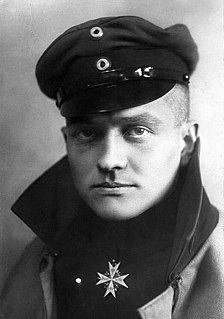
The following are lists of World War I flying aces. Historically, a flying ace was defined as a military aviator credited with shooting down five or more enemy aircraft during aerial combat. The term was first used by French newspapers, describing Adolphe Pégoud as l'as, after he downed seven German aircraft.

Julius Arigi was a flying ace of the Austro-Hungarian Empire in World War I with a total of 32 credited victories. His victory total was second only to Godwin von Brumowski. Arigi was considered a superb natural pilot. He was also a technical innovator responsible for engineering changes in the aircraft he flew.

Gottfried Freiherr von Banfield was the most successful Austro-Hungarian naval aeroplane pilot in the First World War. He was known as the 'Eagle of Trieste' and was the last person in history to wear the Military Order of Maria Theresa. He scored 9 aerial victories during the war, making him one of the only Flying aces who flew a flying boat to five or more victories.
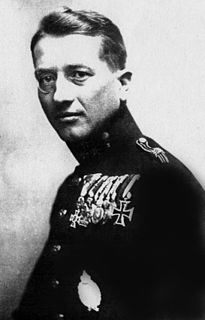
Godwin von Brumowski was the most successful fighter ace of the Austro-Hungarian Air Force during World War I. He was officially credited with 35 air victories, with 8 others unconfirmed because they fell behind Allied lines. Just before the war ended, von Brumowski rose to command of all his country's fighter aviation fighting Italy on the Isonzo front.
Hauptmann (Captain) Benno Fiala Ritter von Fernbrugg was an Austro-Hungarian fighter ace with 28 victories to his credit during World War I. He was the third ranking ace of the Austro-Hungarian Empire. His honours and decorations included the Order of the Iron Crown, Order of Leopold, Military Merit Cross, Military Merit Medal, Gold Medal for Bravery (Austria-Hungary) and the Iron Cross. He was also a technical innovator who pioneered the use of machine guns, radios, and cameras in airplanes. His forty-year aviation career also included aircraft manufacture, airport management, and the establishment of commercial airlines.
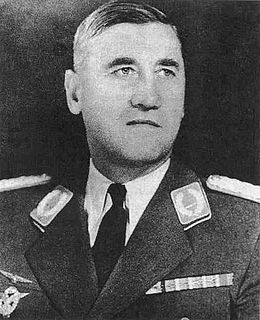
Miroslav (Friedrich) Navratil was a Croatian soldier, pilot, and general who served in the armies of Austria-Hungary, the Kingdom of Yugoslavia, and the Independent State of Croatia.

Oberleutnant Frank Linke-Crawford, was the fourth-ranking ace of the Austro-Hungarian Air Force during World War I, with 27 victories.

StabfeldwebelJohann Lasi was a World War I Austro-Hungarian flying ace, a Croat by ethnicity, credited with five aerial victories on 22 Aug 1916, while acting as an unauthorized rear gunner for Julius Arigi.

Lieutenant József Kiss de Elemér et Ittebe was a World War I flying ace for the Austro-Hungarian Empire. He was credited with 19 aerial victories. He was the most successful Hungarian ace in the war.
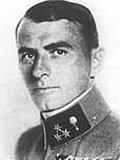
Oberst Adolf Heyrowsky, was a career officer in the Austro-Hungarian military who turned to aviation. He became an accredited flying ace during World War I, with twelve aerial victories scored despite the fact he was a reconnaissance pilot instead of flying fighters. The units he flew in and commanded had long range recon and ground attacks as their primary mission.

Kurt Gruber was an Austro-Hungarian flying ace during the First World War who held the rank of Offiziersstellvertreter. He was credited with eleven aerial victories, 5 shared with other pilots.
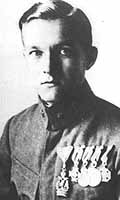
Oberleutnant Franz Rudorfer was an Austro-Hungarian World War I flying ace credited with eleven confirmed and two unconfirmed aerial victories.

Raoul Stojsavljevic was an Austro-Hungarian World War I flying ace credited with ten aerial victories. His later career took him to postwar service in aviation both military and civilian. His younger sister was the painter Mileva Roller and her husband was the artist Alfred Roller (1864–1935).
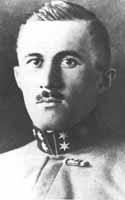
Oberleutnant Ernst Strohschneider was an Austro-Hungarian flying ace during World War I. He was credited with 15 confirmed aerial victories during his rise to the simultaneous command of two fighter squadrons. He died in a flying accident on 21 March 1918.
Feldwebel Stefan Fejes was an Austro-Hungarian flying ace credited with 16 confirmed and 4 unconfirmed aerial victories during World War I. By war's end, he had not only received numerous decorations, he had been personally promoted by his emperor.














